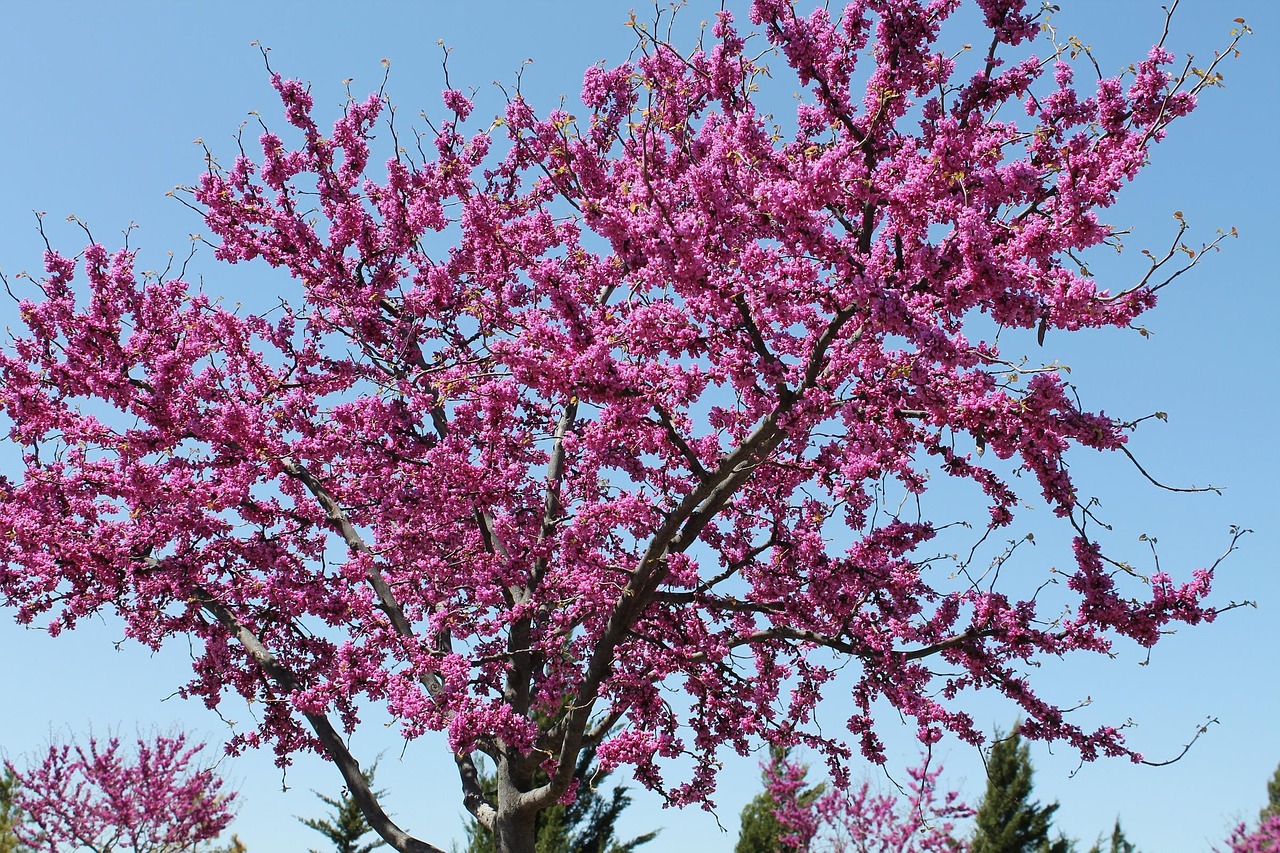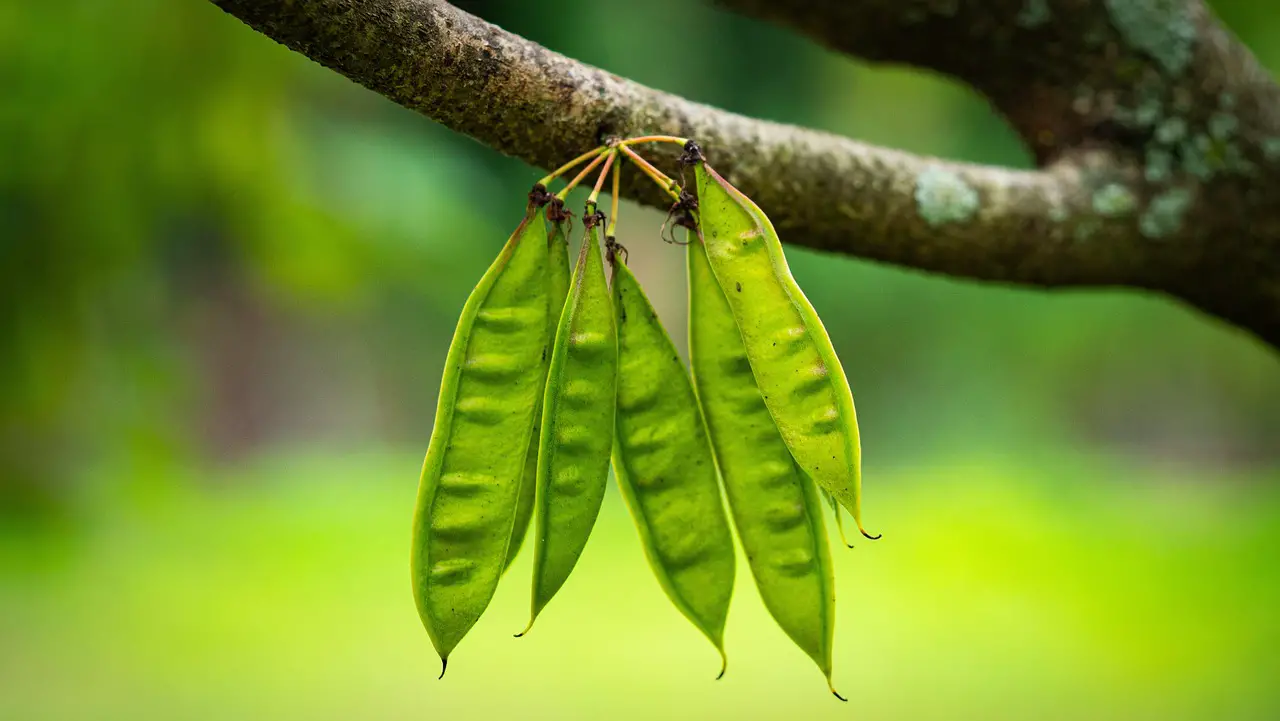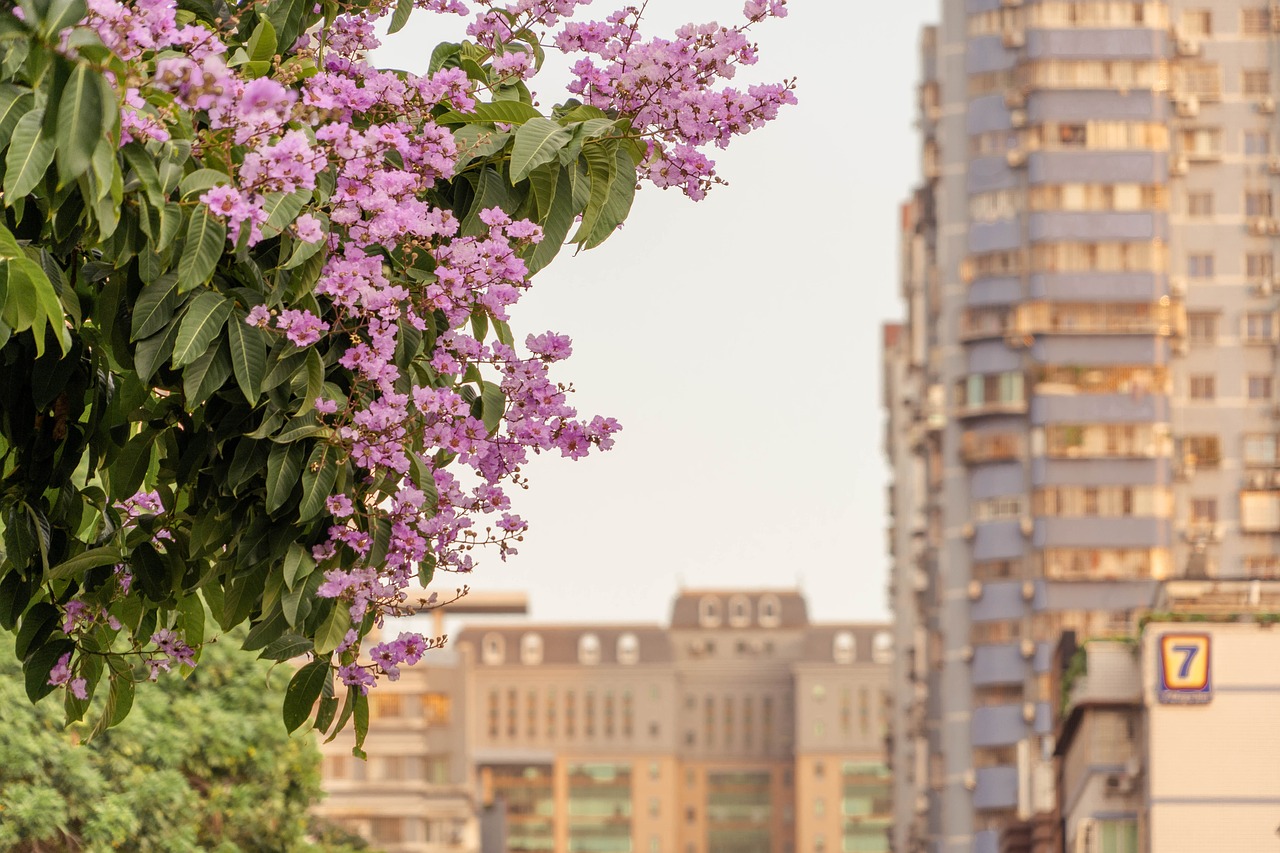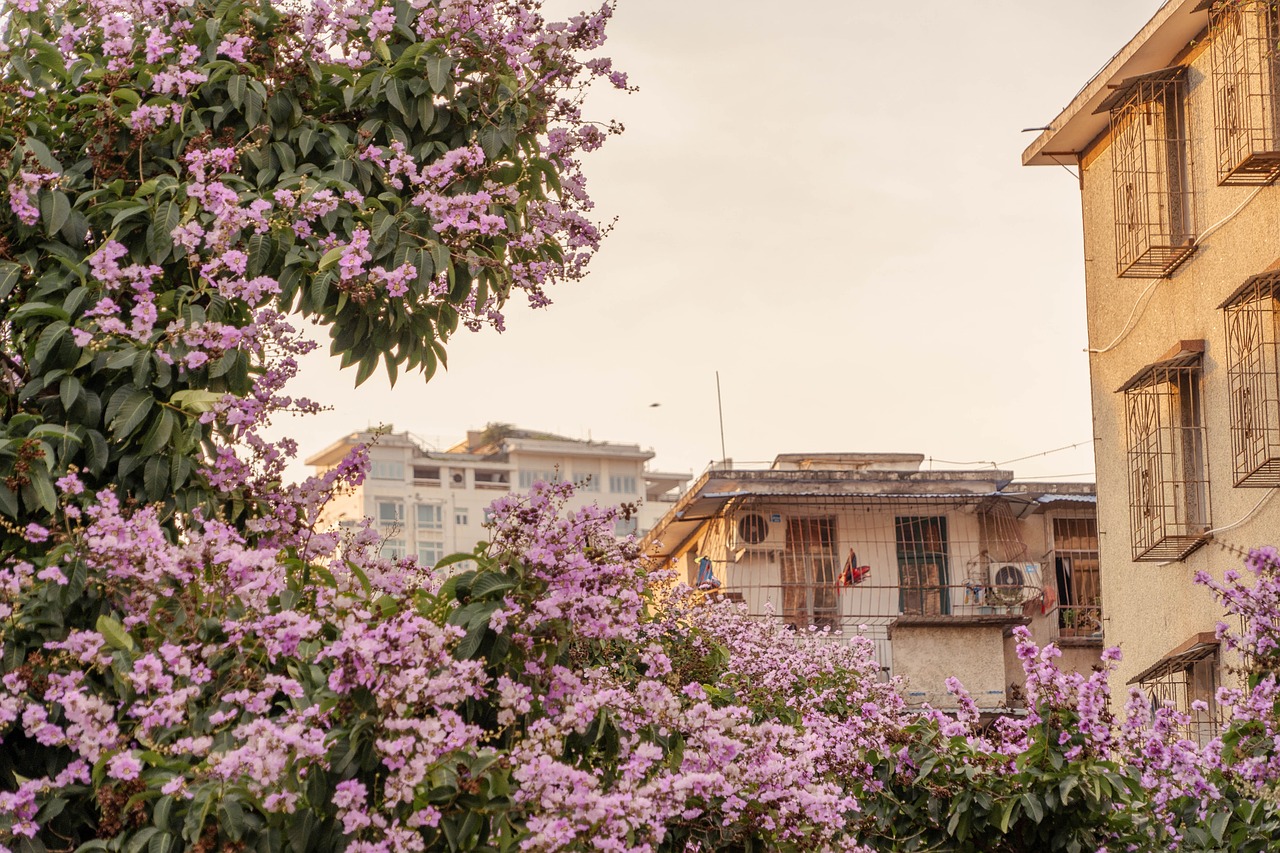To achieve vibrant pink blossoms on your redbud tree, prune during its dormant season. Focus on removing dead or crossing branches. This encourages healthy growth and maximizes blooming potential. Proper pruning techniques enhance airflow and sunlight exposure, leading to a more robust tree.
The redbud tree, known for its stunning pink flowers in early spring, is a beloved ornamental tree in many gardens. Its heart-shaped leaves and unique branching structure add beauty to landscapes throughout the year. However, to maintain the health and vibrancy of your redbud tree, regular pruning is essential. Pruning not only helps shape the tree but also encourages abundant flowering and new growth.

Many gardeners may hesitate when it comes to pruning, fearing they might harm their beloved trees. Understanding the right techniques and timing can alleviate these concerns. Proper pruning can transform your redbud tree into a stunning showpiece, ensuring that it produces those beautiful pink blossoms each year.
Understanding the Redbud Tree
The redbud tree (Cercis canadensis) is native to North America and is known for its striking appearance. Here are some key characteristics of the redbud tree:
| Characteristic | Details |
|---|---|
| Height | Typically reaches 20 to 30 feet |
| Spread | Can spread up to 35 feet |
| Flowers | Pink to purple blossoms in early spring |
| Leaves | Heart-shaped, green foliage |
| Fall Color | Yellow to orange leaves in autumn |
Redbuds thrive in well-drained soil and prefer full sun to partial shade. They are often used as ornamental trees in parks, gardens, and residential landscapes due to their aesthetic appeal. While these trees are generally low-maintenance, pruning is necessary to ensure healthy growth and maximize flowering potential.

When to Prune Your Redbud Tree
The best time to prune a redbud tree is during its dormant season, which typically occurs in late winter or early spring before new growth begins. Pruning during this time allows you to see the tree’s structure without the obstruction of leaves. Additionally, it minimizes stress on the tree and reduces the risk of disease.
Here are some specific timing tips for pruning:
- Prune in late winter or early spring.
- Avoid pruning during the fall, as this can stimulate new growth that may be damaged by frost.
- If you notice any dead or diseased branches during the summer, remove them promptly.
Essential Pruning Techniques
Pruning requires careful technique to ensure that you do not damage your tree. Here are essential methods to consider:

1. Clean Your Tools
Before you start pruning, ensure your tools are clean and sharp. Using sterilized tools prevents the spread of diseases between plants. A simple solution of water and bleach can help sanitize your tools effectively.
2. Identify Branches to Remove
Look for branches that are:
- Dead or dying
- Crossing or rubbing against other branches
- Growing inward towards the center of the tree
- Shooting straight up (water sprouts)
Removing these branches will improve airflow and light penetration, which is vital for healthy growth.

3. Make Clean Cuts
When making cuts, ensure they are clean and at a slight angle. This helps water runoff and reduces the risk of rot. Always cut just above a bud or lateral branch to encourage healthy new growth.
4. Limit the Amount You Prune
A common rule of thumb is to remove no more than 25% of the tree’s canopy in a single season. Over-pruning can stress the tree and lead to poor health and fewer blossoms.
By following these techniques and timing your pruning correctly, you will promote vibrant pink blossoms on your redbud tree. This care will not only improve its aesthetic appeal but also ensure its longevity and health in your garden.
Common Pruning Mistakes to Avoid
While pruning is essential for maintaining a healthy redbud tree, there are common mistakes that many gardeners make. Avoiding these errors can help ensure that your tree continues to thrive and produce beautiful blossoms.
1. Pruning at the Wrong Time
Timing is crucial when it comes to pruning. Many gardeners mistakenly prune their redbud trees in the fall or during the summer months. This can lead to stress on the tree and hinder its blooming potential. It’s essential to stick to the late winter or early spring window for optimal results.
2. Using Dull Tools
Using dull pruning tools can result in jagged cuts that may damage the tree. Always ensure that your tools are sharp and well-maintained. This helps you make clean cuts, which promote faster healing and reduce the risk of disease.
3. Over-Pruning
As previously mentioned, removing more than 25% of the tree’s canopy in a single season can be detrimental. Over-pruning can cause stress, leading to fewer blossoms and even tree decline. Always assess how much you are cutting before starting.
4. Ignoring Tree Structure
Many gardeners focus solely on removing unwanted branches without considering the overall structure of the tree. Maintaining a balanced shape is vital for stability and aesthetics. Be mindful of how your cuts affect the tree’s form.
Signs Your Redbud Tree Needs Pruning
Understanding when to prune your redbud tree is essential. Here are some signs that indicate it may be time to take action:
- Dead or Diseased Branches: If you notice any branches that appear dead or have signs of disease, they should be removed immediately.
- Overcrowding: If branches are crossing or rubbing against each other, it may lead to damage and should be addressed.
- Weak Growth: If your redbud tree is producing fewer blooms than usual or has stunted growth, it may require pruning to stimulate new growth.
- Pest Infestation: If pests are infesting specific branches, removing those can prevent further spread.
The Benefits of Proper Pruning
Pruning your redbud tree not only enhances its appearance but also offers numerous benefits:
- Improved Airflow: Proper pruning increases airflow around the branches, reducing the likelihood of fungal diseases.
- Enhanced Sunlight Exposure: Removing overcrowded branches allows more sunlight to reach all parts of the tree, promoting healthy leaf and flower production.
- Stimulated Growth: Pruning encourages new growth, leading to more abundant blossoms in springtime.
- Structural Integrity: Regular maintenance helps maintain a strong and stable structure, minimizing the risk of branches breaking under weight or during storms.
Tools You Will Need for Pruning
Having the right tools makes the pruning process much more efficient. Here’s a list of essential tools you should consider having on hand:
- Hand Pruners: Ideal for small branches and precise cuts.
- Loppers: Best for medium-sized branches that are too thick for hand pruners.
- Saw: A pruning saw is necessary for larger branches that require more serious cutting.
- Gloves: Protect your hands from cuts and scratches while working.
- Ladder: If your tree is tall, a sturdy ladder will help you reach higher branches safely.
Caring for Your Redbud Tree Post-Pruning
After pruning, it’s important to care for your redbud tree properly to promote healing and encourage new growth. Here are some tips:
1. Watering
Ensure that your redbud tree receives adequate water after pruning. This helps reduce stress and promotes recovery. A good rule of thumb is to water deeply once a week during dry spells.
2. Mulching
Add a layer of mulch around the base of the tree. This helps retain moisture and suppresses weeds that can compete for nutrients. Aim for a mulch layer of about 2-4 inches, keeping it away from the trunk to prevent rot.
3. Fertilizing
If you notice that your redbud tree isn’t thriving after pruning, consider applying a balanced fertilizer in early spring. This can provide essential nutrients to support new growth.
4. Monitoring
Keep an eye on your redbud tree for any signs of stress or disease after pruning. Early detection can help you address any issues before they escalate.
By following these guidelines and understanding the nuances of redbud tree care, you can ensure that your tree remains healthy and vibrant, producing stunning pink blossoms each spring.
Common Pests and Diseases Affecting Redbud Trees
Redbud trees are generally hardy, but they can be susceptible to certain pests and diseases. Identifying these issues early can help you take action and maintain the health of your tree.
1. Aphids
Aphids are small, soft-bodied insects that can affect redbud trees. They feed on the sap of the leaves, which may lead to curling and yellowing. Additionally, they produce a sticky substance called honeydew that can attract other pests.
- Signs of Infestation: Look for clusters of tiny insects on new growth or the presence of sticky residue on leaves.
- Control Methods: Introduce beneficial insects like ladybugs or use insecticidal soap to manage aphid populations.
2. Scale Insects
Scale insects can appear as small, raised bumps on the branches and leaves. They also suck the sap from the tree, weakening it over time.
- Signs of Infestation: Look for discolored patches or sticky residue on leaves.
- Control Methods: Use horticultural oil to suffocate scale insects or apply systemic insecticides if necessary.
3. Powdery Mildew
This fungal disease appears as a white, powdery substance on leaves and can hinder photosynthesis. High humidity and poor air circulation often contribute to its development.
- Signs of Infection: Look for white spots or a powdery coating on foliage.
- Control Methods: Improve air circulation by pruning crowded branches and apply fungicides if the infection is severe.
4. Verticillium Wilt
This soil-borne fungal disease affects many types of trees, including redbuds. It causes wilting, yellowing leaves, and branch dieback.
- Signs of Infection: Look for sudden wilting on one side of the tree or branch dieback.
- Control Methods: Unfortunately, there is no cure for this disease. Remove infected trees to prevent spread and improve soil drainage.
Seasonal Care for Redbud Trees
Caring for your redbud tree goes beyond pruning. Seasonal care is essential for promoting healthy growth and vibrant blossoms throughout the year.
Spring Care
In spring, focus on promoting growth and flowering:
- Watering: Ensure consistent moisture as new growth emerges. Deep watering helps establish strong roots.
- Fertilizing: Apply a balanced, slow-release fertilizer to encourage flowering. Follow package instructions for proper application rates.
- Pruning: As discussed earlier, prune before new growth begins to shape the tree effectively.
Summer Care
During summer, your redbud tree will require maintenance to ensure continued health:
- Irrigation: Monitor moisture levels regularly. Water during dry spells, especially when temperatures soar.
- Pest Control: Keep an eye out for pests like aphids and scale insects. Use organic methods whenever possible to keep your tree healthy.
- Add Mulch: If not done in spring, apply mulch to retain soil moisture and suppress weeds.
Fall Care
As autumn approaches, focus on preparing your redbud tree for winter:
- Final Watering: Water deeply before the ground freezes to ensure your tree has enough moisture during winter.
- Leaf Cleanup: Rake fallen leaves to prevent fungal diseases and pests from overwintering in your garden.
- Mulching: Apply an additional layer of mulch around the base to protect roots from freezing temperatures.
Winter Care
Winter is a dormant period for redbud trees, but some care is still beneficial:
- Protection from Ice: If heavy ice or snow accumulates on branches, gently remove it to prevent breakage.
- Avoid Damage: Ensure that the area around the tree is clear from heavy equipment or foot traffic that might damage the roots.
Aesthetic Uses of Redbud Trees
The striking appearance of redbud trees makes them a popular choice for landscaping. Here are some ways to use them effectively in your garden:
1. Specimen Trees
Planting a single redbud tree as a focal point in your yard draws attention to its stunning blooms and unique foliage. Choose a location where it can shine without competition from other plants.
2. Group Plantings
Redbuds can also be planted in groups to create a vibrant display. This works well in larger gardens or parks where their beautiful pink flowers can be showcased together.
3. Understory Trees
The natural height and shape of redbud trees make them ideal understory plants beneath taller trees. They can thrive in partial shade while still providing beautiful blossoms in spring.
The versatility of redbud trees allows them to fit into various garden styles, whether traditional or contemporary. With proper care and attention, these trees will continue to enhance your landscape year after year.
Environmental Considerations for Redbud Trees
When planting and caring for redbud trees, it is essential to consider their environmental impact and the conditions they thrive in. Understanding these factors can help you create a more sustainable garden.
1. Native Habitat
Redbud trees are native to North America, particularly in the eastern United States. They grow well in various soil types but prefer well-drained, loamy soils. When planting, consider using native plants alongside redbuds to enhance biodiversity.
2. Wildlife Benefits
Redbud trees provide significant benefits to local wildlife. Their flowers attract pollinators, such as bees and butterflies, during early spring when few other plants are blooming. Additionally, the tree’s seeds offer food for birds and small mammals.
- Pollinator Support: The blossoms are rich in nectar, making them a great food source.
- Habitat: Their branches can serve as nesting sites for birds.
3. Soil Health
Planting redbud trees can contribute positively to soil health. Their root systems help prevent erosion and improve soil structure. As they grow, they can also contribute organic matter to the soil when leaves fall and decompose.
Enhancing Your Landscape with Redbud Trees
In addition to their beauty and ecological benefits, redbud trees can enhance your landscape in several ways:
1. Seasonal Interest
Redbud trees offer seasonal interest throughout the year. In spring, the vibrant pink flowers create a stunning display. During summer, the lush green foliage provides shade, while in fall, the leaves turn shades of yellow and orange, adding richness to your garden.
2. Design Versatility
The unique shape of redbud trees allows them to fit into various landscape designs. Whether you are aiming for a formal garden or a more naturalistic setting, redbuds can adapt beautifully:
- Formal Gardens: Use redbuds as focal points or align them along pathways.
- Naturalistic Settings: Group them with other native plants for a woodland effect.
3. Urban Gardening
Redbuds are also suitable for urban environments, where space may be limited. Their moderate size makes them ideal for smaller yards or street plantings. They can help soften hardscapes and provide a touch of nature in bustling city areas.
Common Varieties of Redbud Trees
There are several varieties of redbud trees available, each offering unique features:
| Variety | Description |
|---|---|
| Cercis canadensis | The common eastern redbud, known for its stunning pink flowers. |
| Cercis canadensis ‘Forest Pansy’ | This variety features deep purple leaves that turn bright red in fall. |
| Cercis canadensis ‘Hearts of Gold’ | A unique variety with golden-yellow leaves in the spring that turn green in summer. |
| Cercis siliquastrum | The Mediterranean redbud, which blooms later and has a slightly different flower shape. |
Choosing the right variety depends on your specific landscape needs and aesthetic preferences. Each type offers its own charm while contributing to the beauty of your garden.
Final Thoughts
Caring for redbud trees requires knowledge and attention but is ultimately rewarding. By following proper pruning techniques, understanding seasonal care needs, and recognizing potential pests and diseases, you can ensure your redbud tree thrives. These trees not only enhance your landscape with their beautiful blooms but also provide ecological benefits that support local wildlife.
With their versatility in design and adaptability to various environments, redbud trees are an excellent addition to any garden. By considering factors like native habitat and seasonal interest, you can create a sustainable landscape that flourishes year after year. Embrace the beauty and benefits of redbuds in your gardening endeavors, and enjoy the vibrant pink blossoms that signal the arrival of spring.
